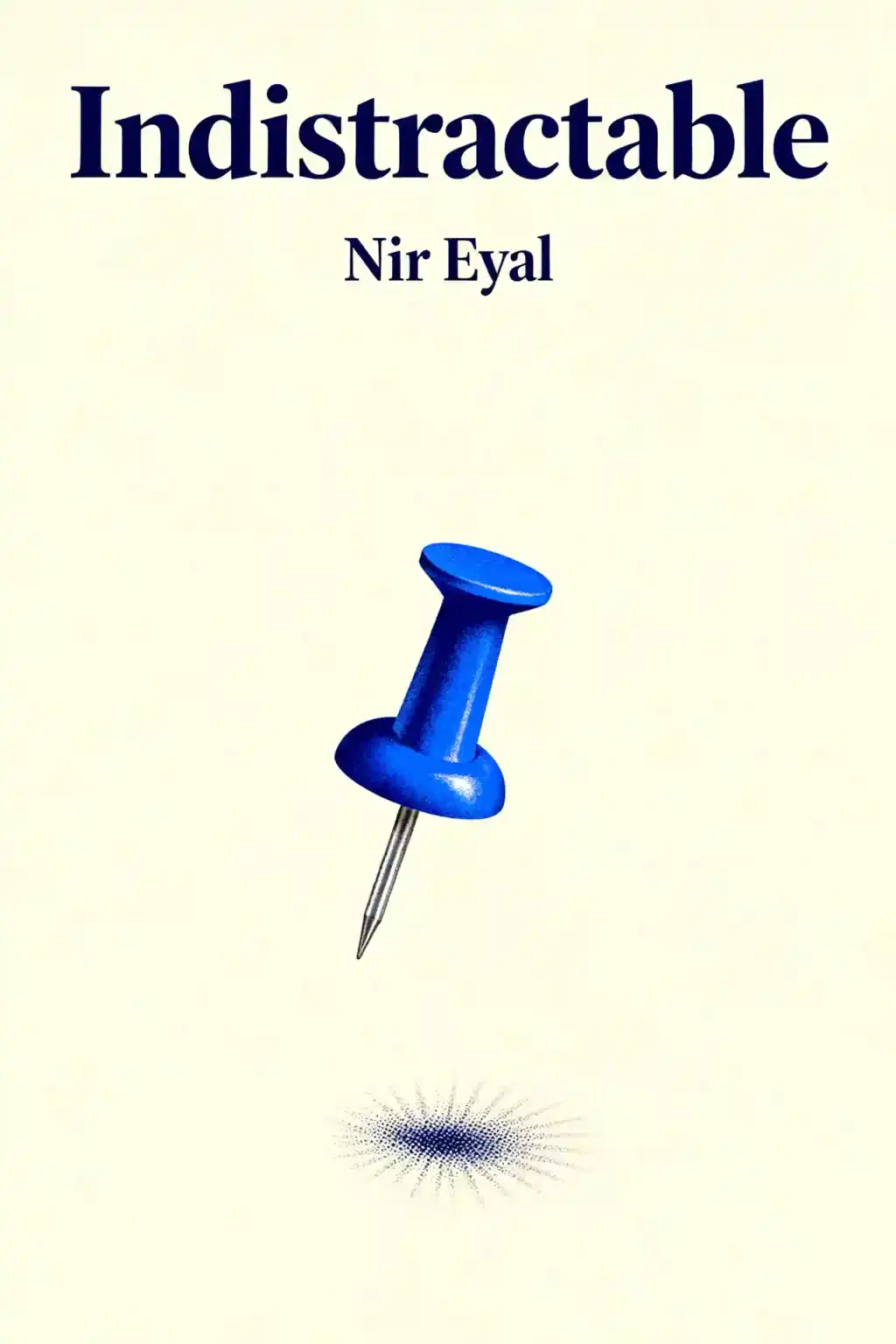What is
Indistractable by Nir Eyal about?
Indistractable by Nir Eyal is a practical guide to overcoming distractions in the digital age by addressing their root causes. It offers a four-step model to help readers align actions with intentions, focusing on managing internal triggers, scheduling priorities, eliminating external distractions, and creating accountability pacts. The book combines behavioral psychology and real-world examples to teach sustainable focus strategies.
Who should read
Indistractable?
This book is ideal for professionals, parents, or anyone struggling with digital distractions and time management. It’s particularly valuable for remote workers, entrepreneurs, and individuals seeking to improve productivity, rebuild focus, or balance screen time with personal relationships. Eyal’s research-backed approach appeals to readers interested in behavioral science and self-improvement.
Is
Indistractable worth reading?
Yes, Indistractable is worth reading for its actionable strategies to regain control of attention in a distraction-filled world. It provides tools like the “10-minute rule” and “traction vs. distraction” framework, backed by psychological insights. The book has been endorsed by thought leaders like James Clear and named a top personal development title by Audible and Amazon.
What are the key concepts in
Indistractable?
Key concepts include:
- Internal triggers: Understanding emotional drivers behind distractions.
- Timeboxing: Scheduling focused work blocks to prioritize traction.
- External trigger management: Eliminating unnecessary interruptions.
- Precommitment pacts: Creating accountability to stay on track.
Eyal argues distraction stems from discomfort avoidance, and solutions require addressing root causes, not just symptoms.
How does
Indistractable address digital distractions?
Eyal rejects digital detoxes, advocating intentional tech use instead. He suggests hacking back external triggers (e.g., turning off non-urgent notifications) and using “effort pacts” like website blockers. The book emphasizes that technology isn’t inherently harmful—it’s about aligning usage with personal values.
What is the “10-minute rule” in
Indistractable?
The “10-minute rule” helps resist impulsive distractions: When tempted to switch tasks, wait 10 minutes before acting. This pause disrupts automatic behavior, allowing time to reassess whether the distraction aligns with long-term goals. The technique leverages the “surf the urge” concept from addiction therapy.
How does
Indistractable compare to
Atomic Habits?
While both focus on behavior change, Atomic Habits emphasizes building systems for incremental improvement, whereas Indistractable targets distraction elimination. Eyal’s work complements Clear’s by providing specific tactics to protect focus from modern interruptions, making them ideal companion reads for productivity enthusiasts.
What are notable quotes from
Indistractable?
- “Being indistractable means striving to do what you say you will do.”
- “You can’t call something a distraction unless you know what it’s distracting you from.”
These quotes underscore the book’s emphasis on self-awareness and intentionality as antidotes to distraction.
What are criticisms of
Indistractable?
Some critics argue Eyal oversimplifies systemic workplace distractions or underestimates addictive app design’s role. Others note his solutions require high self-discipline, which may challenge those with ADHD. However, most praise its balanced approach to personal responsibility and environmental redesign.
How can
Indistractable improve time management?
The book teaches timeboxing—assigning specific slots for tasks—to transform abstract goals into actionable plans. By scheduling “traction” (meaningful work) first, readers reduce decision fatigue and create boundaries against distractions. Eyal also advocates tracking time spent to identify patterns and adjust habits.
Who is Nir Eyal, the author of
Indistractable?
Nir Eyal is a behavioral design expert and Stanford MBA graduate, best known for Hooked: How to Build Habit-Forming Products. A former tech founder and lecturer, he combines industry experience with psychological research to address distraction and productivity. His work has been translated into 30+ languages.
What is the “traction vs. distraction” framework?
Traction: Actions aligning with values and goals (e.g., deep work, family time).
Distraction: Actions pulling you away from intentions (e.g., mindless scrolling).
Eyal argues clarity on what constitutes traction for each individual is essential to becoming indistractable. This binary framework helps readers categorize and prioritize activities.








